Sale 2617 - Lot 213
Additional Images
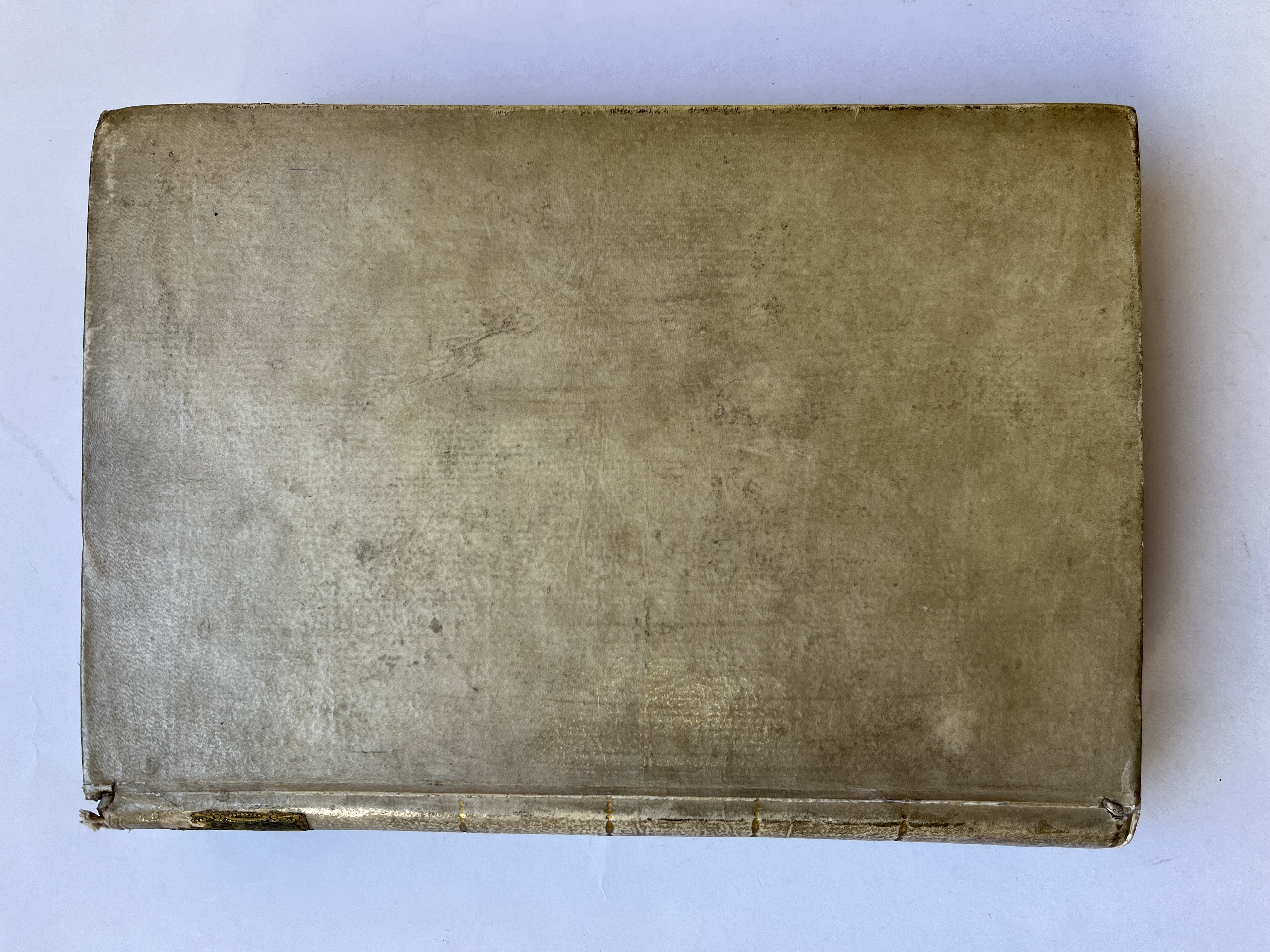
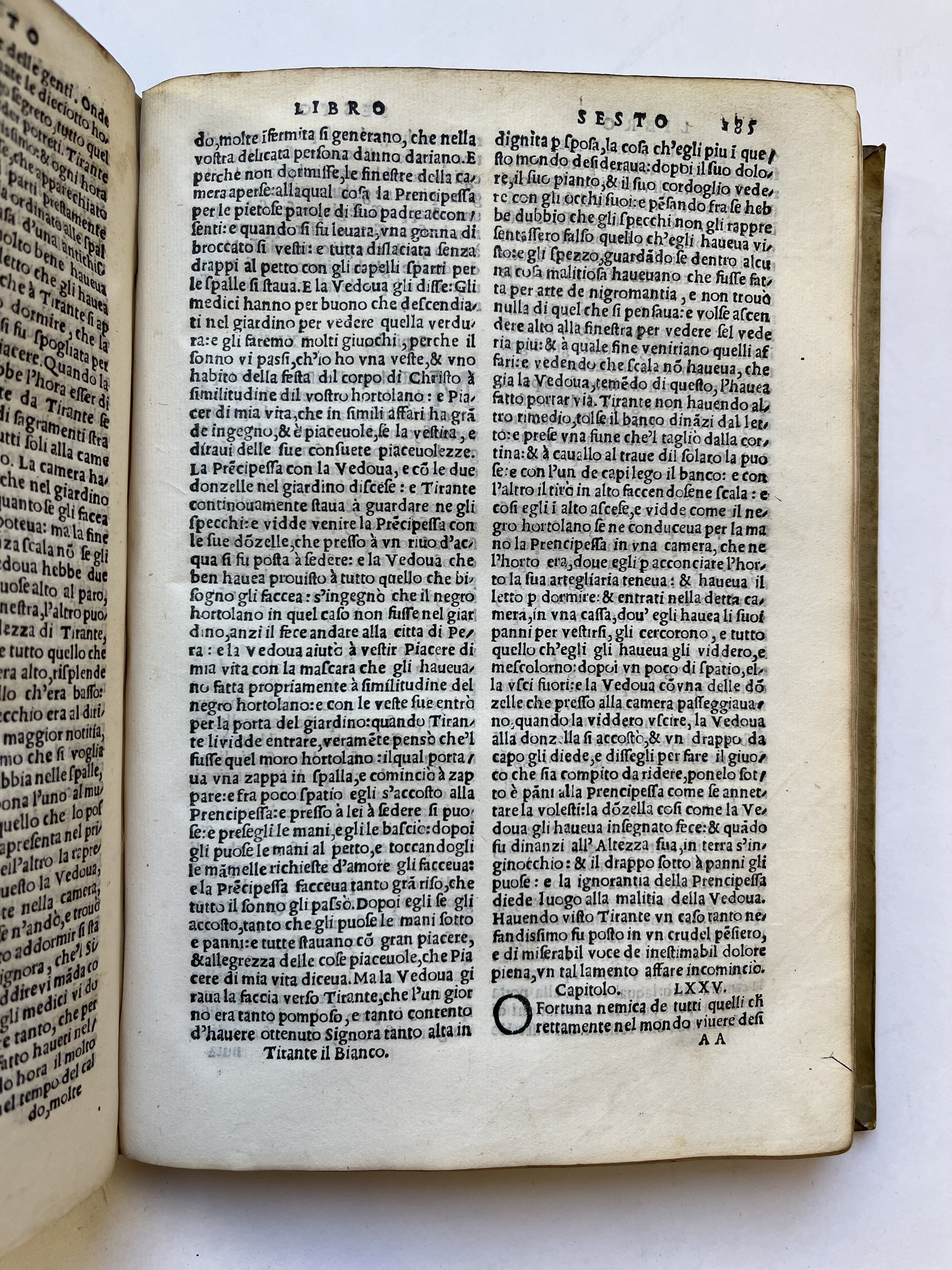
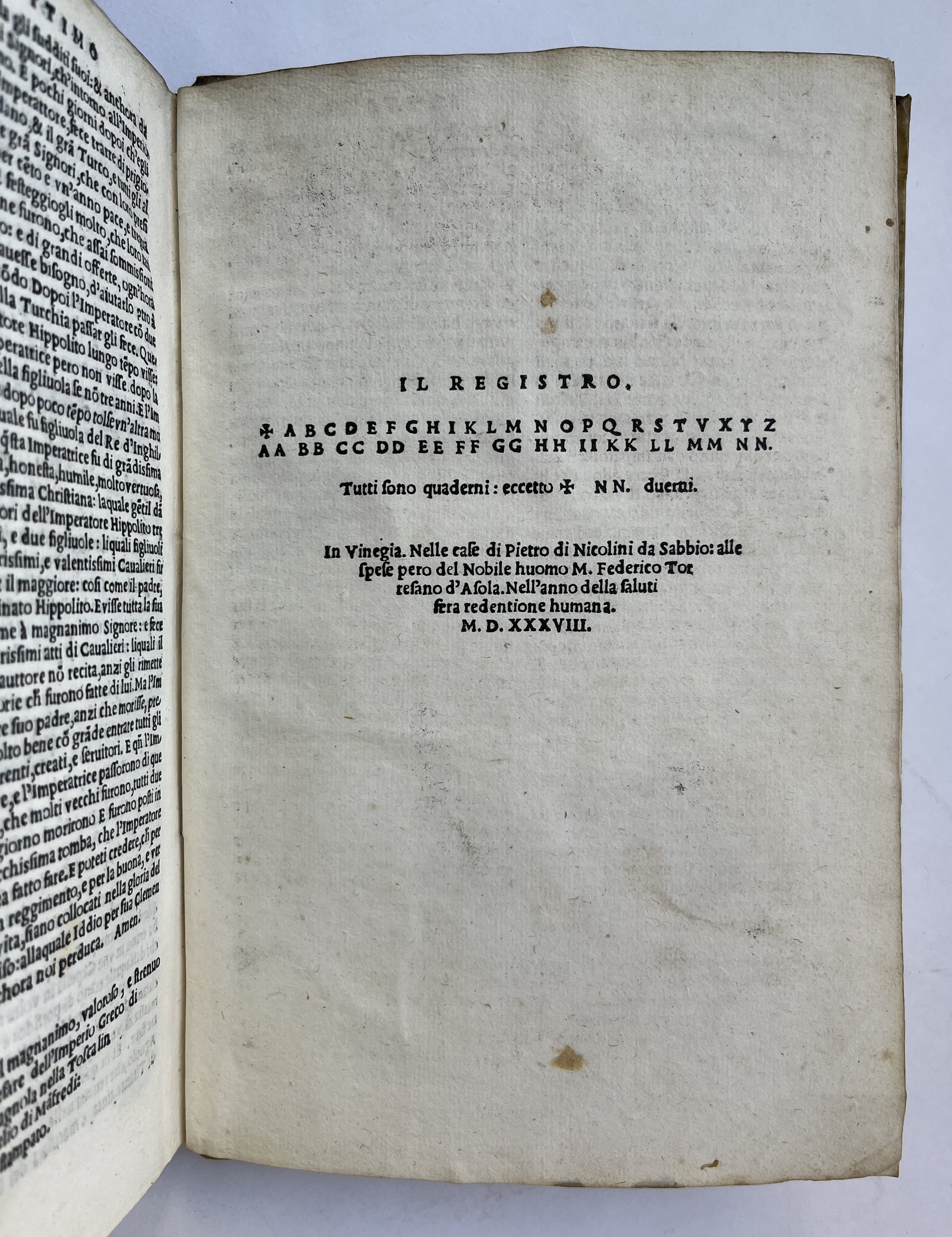
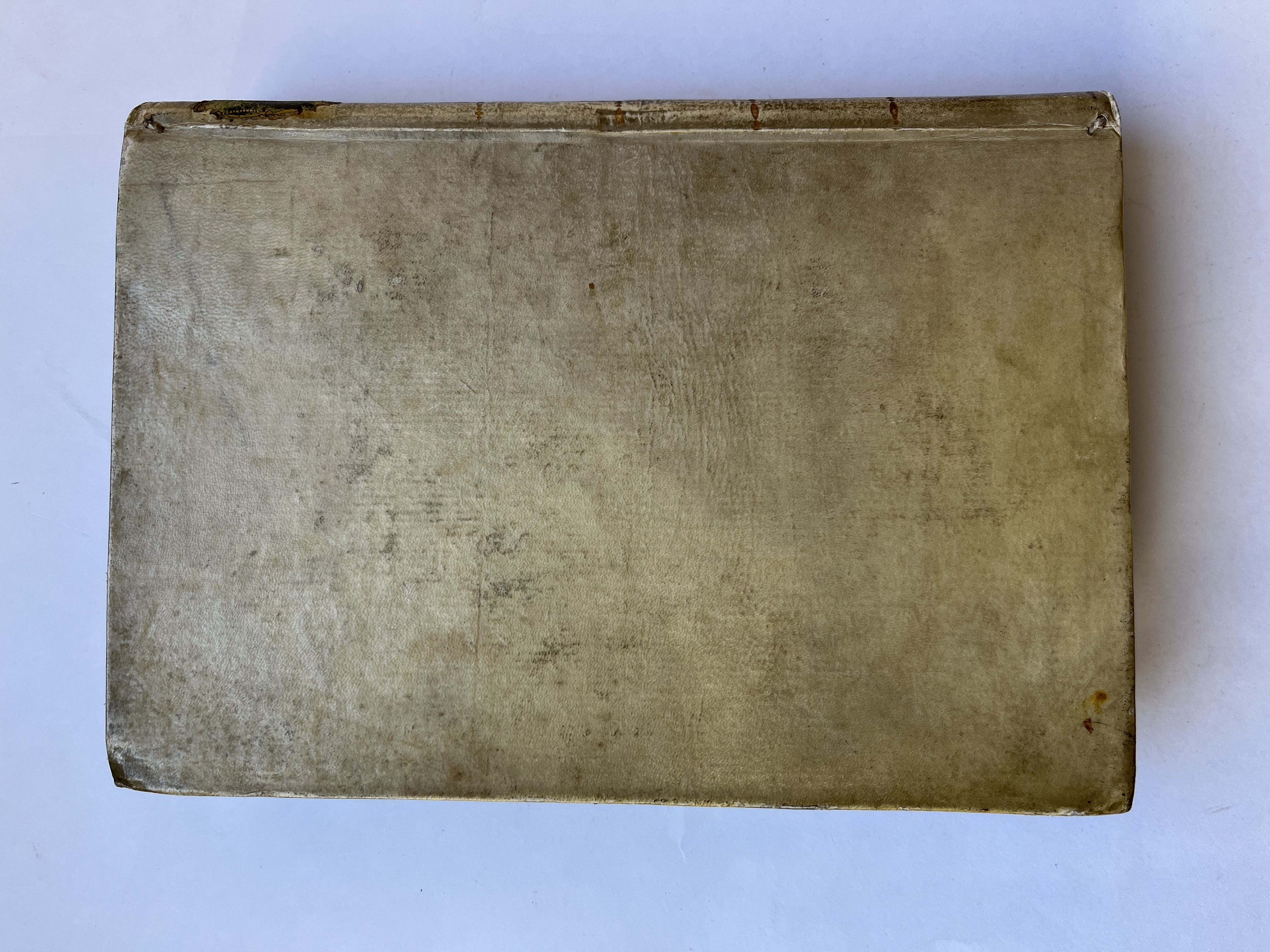
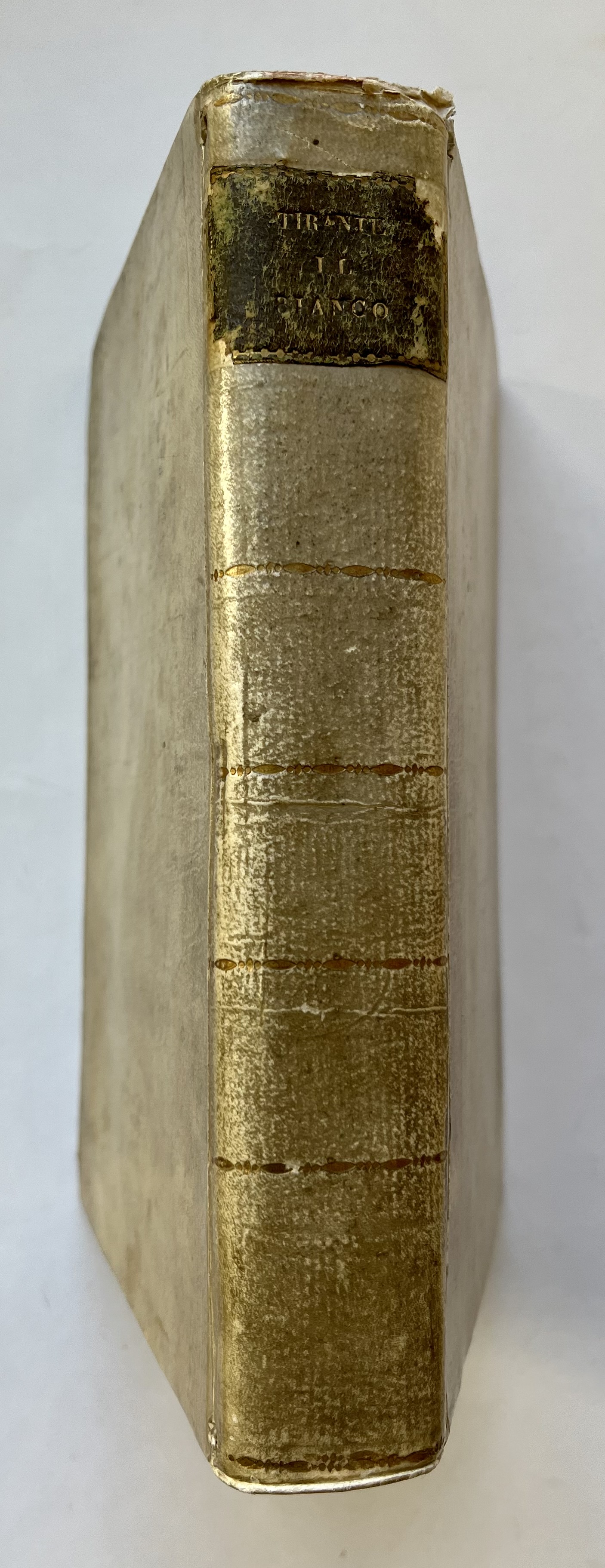
5





Sale 2617 - Lot 213
Estimate: $ 2,500 - $ 3,500
Martorell, Joanot (c. 1410-1465)
Tirante il Bianco.
Venice: P. dei Nicolini da Sabbio for Federico Torresano d'Asola, 1538.
First Italian edition, quarto, translated from Valencian Spanish original, Tirant lo Blanch, into Italian by Lelio Manfredi (d. 1528); title page printed within woodcut border incorporating the printer's initials flanking a tower at the foot of the border, with reaching vines and an owl perched at center top; text printed in roman type, two columns throughout; ex libris Edward Davenport with armorial bookplate; bound in full 18th century parchment over boards, spine with gilt decoration and green morocco label; endcap chipped at head with slight loss, overall nicely preserved, 8 1/4 x 5 3/4 in.
Famously praised by Cervantes in Don Quixote as "the best book of its kind in the world," this knight's tale was first published in 1490. Composed originally in Catalan, it stands directly in the lineage of the modern western novel, with Cervantes himself as heir apparent.
From the Ken Rapoport Collection.
Tirante il Bianco.
Venice: P. dei Nicolini da Sabbio for Federico Torresano d'Asola, 1538.
First Italian edition, quarto, translated from Valencian Spanish original, Tirant lo Blanch, into Italian by Lelio Manfredi (d. 1528); title page printed within woodcut border incorporating the printer's initials flanking a tower at the foot of the border, with reaching vines and an owl perched at center top; text printed in roman type, two columns throughout; ex libris Edward Davenport with armorial bookplate; bound in full 18th century parchment over boards, spine with gilt decoration and green morocco label; endcap chipped at head with slight loss, overall nicely preserved, 8 1/4 x 5 3/4 in.
Famously praised by Cervantes in Don Quixote as "the best book of its kind in the world," this knight's tale was first published in 1490. Composed originally in Catalan, it stands directly in the lineage of the modern western novel, with Cervantes himself as heir apparent.
From the Ken Rapoport Collection.





